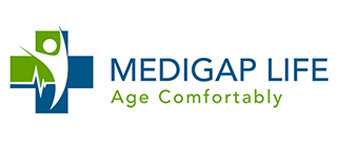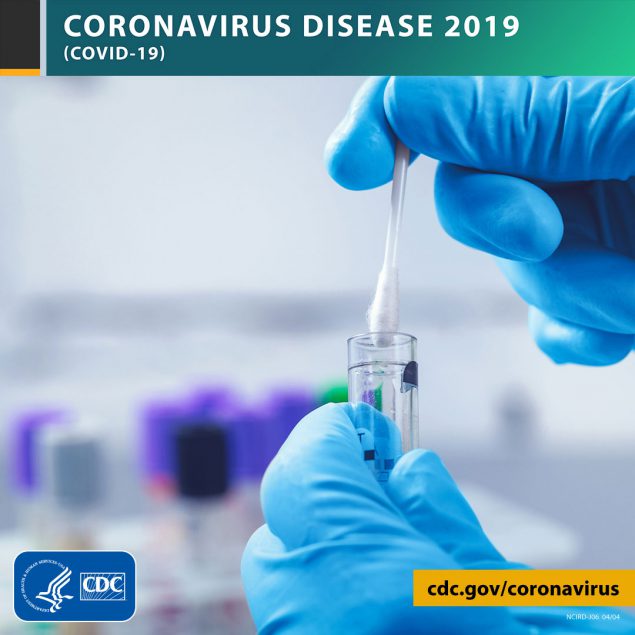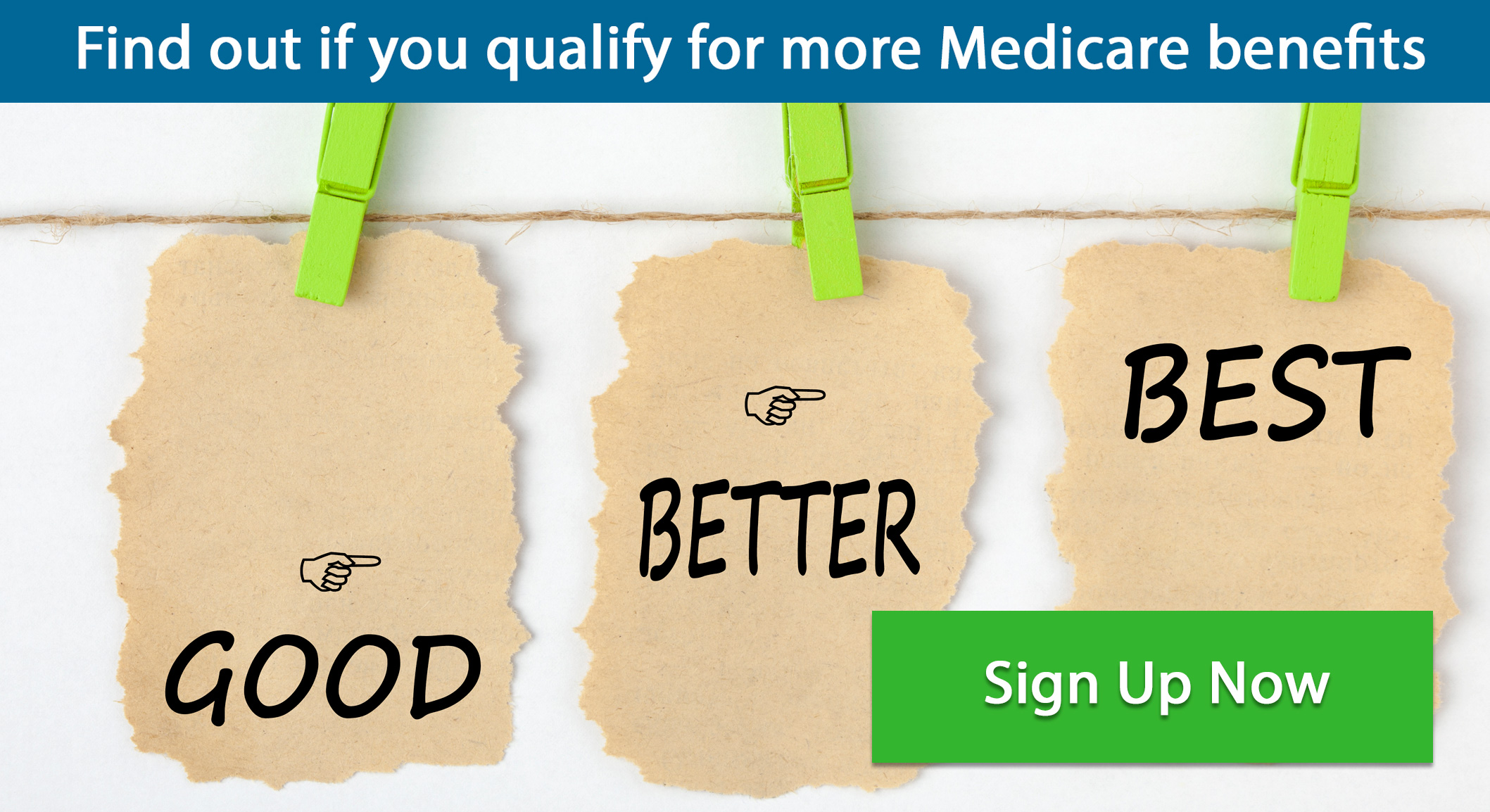Reopening Guidance for Cleaning and Disinfecting Public Spaces, Workplaces, Businesses, Schools, and Homes
This guidance is intended for all Americans, whether you own a business, run a school, or want to ensure the cleanliness and safety of your home. Reopening America requires all of us to move forward together by practicing social distancing and other daily habits to reduce our risk of exposure to the virus that causes COVID-19. Reopening the country also strongly relies on public health strategies, including increased testing of people for the virus, social distancing, isolation, and keeping track of how someone infected might have infected other people. This plan is part of the larger United States Government plan external iconand focuses on cleaning and disinfecting public spaces, workplaces, businesses, schools, and can also be applied to your home.
Cleaning and disinfecting public spaces including your workplace, school, home, and business will require you to:
- Develop your plan
- Implement your plan
- Maintain and revise your plan
Reducing the risk of exposure to COVID-19 by cleaning and disinfection is an important part of reopening public spaces that will require careful planning. Every American has been called upon to slow the spread of the virus through social distancing and prevention hygiene, such as frequently washing your hands and wearing face coverings. Everyone also has a role in making sure our communities are as safe as possible to reopen and remain open.
The virus that causes COVID-19 can be killed if you use the right products. EPA has compiled a list of disinfectant products that can be used against COVID-19, including ready-to-use sprays, concentrates, and wipes. Each product has been shown to be effective against viruses that are harder to kill than viruses like the one that causes COVID-19.
This document provides a general framework for cleaning and disinfection practices. The framework is based on doing the following:
- Normal routine cleaning with soap and water will decrease how much of the virus is on surfaces and objects, which reduces the risk of exposure.
- Disinfection using EPA-approved disinfectants against COVID-19 external iconcan also help reduce the risk. Frequent disinfection of surfaces and objects touched by multiple people is important.
- When EPA-approved disinfectants external iconare not available, alternative disinfectants can be used (for example, 1/3 cup of bleach added to 1 gallon of water, or 70% alcohol solutions). Do not mix bleach or other cleaning and disinfection products together. This can cause fumes that may be very dangerous to breathe in. Keep all disinfectants out of the reach of children.
Links to specific recommendations for many public spaces that use this framework, can be found at the end of this document.
It’s important to continue to follow federal, state, tribal, territorial, and local guidance for reopening America.
A Few Important Reminders about Coronaviruses and Reducing the Risk of Exposure:
- Coronaviruses on surfaces and objects naturally die within hours to days. Warmer temperatures and exposure to sunlight will reduce the time the virus survives on surfaces and objects.
- Normal routine cleaning with soap and water removes germs and dirt from surfaces. It lowers the risk of spreading COVID-19 infection.
- Disinfectants kill germs on surfaces. By killing germs on a surface after cleaning, you can further lower the risk of spreading infection. EPA-approved disinfectantsexternal icon are an important part of reducing the risk of exposure to COVID-19. If disinfectants on this list are in short supply, alternative disinfectants can be used (for example, 1/3 cup of bleach added to 1 gallon of water, or 70% alcohol solutions).
- Store and use disinfectants in a responsible and appropriate manner according to the label. Do not mix bleach or other cleaning and disinfection products together–this can cause fumes that may be very dangerous to breathe in. Keep all disinfectants out of the reach of children.
- Do not overuse or stockpile disinfectants or other supplies. This can result in shortages of appropriate products for others to use in critical situations.
- Always wear gloves appropriate for the chemicals being used when you are cleaning and disinfecting. Additional personal protective equipment (PPE) may be needed based on setting and product. For more information, see CDC’s website on Cleaning and Disinfection for Community Facilities.
- Practice social distancing, wear facial coverings, and follow proper prevention hygiene, such as washing your hands frequently and using alcohol-based (at least 60% alcohol) hand sanitizer when soap and water are not available.
If you oversee staff in a workplace, your plan should include considerations about the safety of custodial staff and other people who are carrying out the cleaning or disinfecting. These people are at increased risk of being exposed to the virus and to any toxic effects of the cleaning chemicals. These staff should wear appropriate PPE for cleaning and disinfecting. To protect your staff and to ensure that the products are used effectively, staff should be instructed on how to apply the disinfectants according to the label. For more information on concerns related to cleaning staff, visit the Occupational Safety and Health Administration’s website on Control and Prevention.external icon
Develop Your Plan
Evaluate your workplace, school, home, or business to determine what kinds of surfaces and materials make up that area. Most surfaces and objects will just need normal routine cleaning. Frequently touched surfaces and objects like light switches and doorknobs will need to be cleaned and then disinfected to further reduce the risk of germs on surfaces and objects.
- First, clean the surface or object with soap and water.
- Then, disinfect using an EPA-approved disinfectantexternal icon.
- If an EPA-approved disinfectant is unavailable, you can use 1/3 cup of bleach added to 1 gallon of water, or 70% alcohol solutions to disinfect. Do not mix bleach or other cleaning and disinfection products together. Find additional information at CDC’s website on Cleaning and Disinfecting Your Facility.
You should also consider what items can be moved or removed completely to reduce frequent handling or contact from multiple people. Soft and porous materials, such as area rugs and seating, may be removed or stored to reduce the challenges with cleaning and disinfecting them. Find additional reopening guidance for cleaning and disinfecting in the Reopening Decision Toolpdf icon.
It is critical that your plan includes how to maintain a cleaning and disinfecting strategy after reopening. Develop a flexible plan with your staff or family, adjusting the plan as federal, state, tribal, territorial, or local guidance is updated and if your specific circumstances change.
Determine what needs to be cleaned
Some surfaces only need to be cleaned with soap and water. For example, surfaces and objects that are not frequently touched should be cleaned and do not require additional disinfection. Additionally, disinfectants should typically not be applied on items used by children, especially any items that children might put in their mouths. Many disinfectants are toxic when swallowed. In a household setting, cleaning toys and other items used by children with soap and water is usually sufficient. Find more information on cleaning and disinfection toys and other surfaces in the childcare program setting at CDC’s Guidance for Childcare Programs that Remain Open.
These questions will help you decide which surfaces and objects will need normal routine cleaning.
Is the area outdoors?
Outdoor areas generally require normal routine cleaning and do not require disinfection. Spraying disinfectant on sidewalks and in parks is not an efficient use of disinfectant supplies and has not been proven to reduce the risk of COVID-19 to the public. You should maintain existing cleaning and hygiene practices for outdoor areas.
The targeted use of disinfectants can be done effectively, efficiently and safely on outdoor hard surfaces and objects frequently touched by multiple people. Certain outdoor areas and facilities, such as bars and restaurants, may have additional requirements. More information can be found on FDA’s website on Food Safety and the Coronavirus Disease 2019 (COVID-19)external icon.
There is no evidence that the virus that causes COVID-19 can spread directly to humans from water in pools, hot tubs or spas, or water play areas. Proper operation, maintenance, and disinfection (for example, with chlorine or bromine) of pools, hot tubs or spas, and water playgrounds should kill the virus that causes COVID-19. However, there are additional concerns with outdoor areas that may be maintained less frequently, including playgrounds, or other facilities located within local, state, or national parks. For more information, visit CDC’s website on Visiting Parks & Recreational Facilities.
Has the area been unoccupied for the last 7 days?
If your workplace, school, or business has been unoccupied for 7 days or more, it will only need your normal routine cleaning to reopen the area. This is because the virus that causes COVID-19 has not been shown to survive on surfaces longer than this time.
There are many public health considerations, not just COVID-19 related, when reopening public buildings and spaces that have been closed for extended periods. For example, take measures to ensure the safety of your building water system. It is not necessary to clean ventilation systems, other than routine maintenance, as part of reducing risk of corona viruses. For healthcare facilities, additional guidance is provided on CDC’s Guidelines for Environmental Infection Control in Health-Care Facilitiespdf icon.
Determine what needs to be disinfected
Following your normal routine cleaning, you can disinfect frequently touched surfaces and objects using a product from EPA’s list of approved products that are effective against COVID-19.external icon
These questions will help you choose appropriate disinfectants.
Are you cleaning or disinfecting a hard and non-porous material or item like glass, metal, or plastic?
Consult EPA’s list of approved products for use against COVID-19external icon. This list will help you determine the most appropriate disinfectant for the surface or object. You can use diluted household bleach solutions if appropriate for the surface. Pay special attention to the personal protective equipment (PPE) that may be needed to safely apply the disinfectant and the manufacturer’s recommendations concerning any additional hazards. Keep all disinfectants out of the reach of children. Please visit CDC’s website on How to Clean and Disinfect for additional details and warnings.
Examples of frequently touched surfaces and objects that will need routine disinfection following reopening are:
- tables,
- doorknobs,
- light switches,
- countertops,
- handles,
- desks,
- phones,
- keyboards,
- toilets,
- faucets and sinks,
- gas pump handles,
- touch screens, and
- ATM machines
Each business or facility will have different surfaces and objects that are frequently touched by multiple people. Appropriately disinfect these surfaces and objects. For example, transit stations have specific guidance for application of cleaning and disinfection.
Are you cleaning or disinfecting a soft and porous material or items like carpet, rugs, or seating in areas?
Soft and porous materials are generally not as easy to disinfect as hard and non-porous surfaces. EPA has listed a limited number of products approved for disinfection for use on soft and porous materialsexternal icon. Soft and porous materials that are not frequently touched should only be cleaned or laundered, following the directions on the item’s label, using the warmest appropriate water setting. Find more information on CDC’s website on Cleaning and Disinfecting Your Facility for developing strategies for dealing with soft and porous materials.
Consider the resources and equipment needed
Keep in mind the availability of cleaning and disinfection products and appropriate PPE. Always wear gloves appropriate for the chemicals being used for routine cleaning and disinfecting. Follow the directions on the disinfectant label for additional PPE needs. In specific instances, personnel with specialized training and equipment may be required to apply certain disinfectants such as fumigants or fogs. For more information on appropriate PPE for cleaning and disinfection, see CDC’s website on Cleaning and Disinfection for Community Facilities.
Implement Your Plan
Once you have a plan, it’s time to take action. Read all manufacturer’s instructions for the cleaning and disinfection products you will use. Put on your gloves and other required personal protective equipment (PPE) to begin the process of cleaning and disinfecting.
Clean visibly dirty surfaces with soap and water
Clean surfaces and objects using soap and water prior to disinfection. Always wear gloves appropriate for the chemicals being used for routine cleaning and disinfecting. Follow the directions on the disinfectant label for additional PPE needs. When you finish cleaning, remember to wash hands thoroughly with soap and water.
Clean or launder soft and porous materials like seating in an office or coffee shop, area rugs, and carpets. Launder items according to the manufacturer’s instructions, using the warmest temperature setting possible and dry items completely.
Use the appropriate cleaning or disinfectant product
EPA approved disinfectantsexternal icon, when applied according to the manufacturer’s label, are effective for use against COVID-19. Follow the instructions on the label for all cleaning and disinfection products for concentration, dilution, application method, contact time and any other special considerations when applying.
Always follow the directions on the label
Follow the instructions on the label to ensure safe and effective use of the product. Many product labels recommend keeping the surface wet for a specific amount of time. The label will also list precautions such as wearing gloves and making sure you have good ventilation during use of the product. Keep all disinfectants out of the reach of children.
Maintain and Revise Your Plan
Take steps to reduce your risk of exposure to the virus that causes COVID-19 during daily activities. CDC provides tips to reduce your exposure and risk of acquiring COVID-19. Reducing exposure to yourself and others is a shared responsibility. Continue to update your plan based on updated guidance and your current circumstances.
Continue routine cleaning and disinfecting
Routine cleaning and disinfecting are an important part of reducing the risk of exposure to COVID-19. Normal routine cleaning with soap and water alone can reduce risk of exposure and is a necessary step before you disinfect dirty surfaces.
Surfaces frequently touched by multiple people, such as door handles, desks, phones, light switches, and faucets, should be cleaned and disinfected at least daily. More frequent cleaning and disinfection may be required based on level of use. For example, certain surfaces and objects in public spaces, such as shopping carts and point of sale keypads, should be cleaned and disinfected before each use.
Consider choosing a different disinfectant if your first choice is in short supply. Make sure there is enough supply of gloves and appropriate personal protective equipment (PPE) based on the label, the amount of product you will need to apply, and the size of the surface you are treating.
Maintain safe behavioral practices
We have all had to make significant behavioral changes to reduce the spread of COVID-19. To reopen America, we will need to continue these practices:
- social distancing (specifically, staying 6 feet away from others when you must go into a shared space)
- frequently washing hands or use alcohol-based (at least 60% alcohol) hand sanitizer when soap and water are not available
- wearing cloth face coverings
- avoiding touching eyes, nose, and mouth
- staying home when sick
- cleaning and disinfecting frequently touched objects and surfaces
It’s important to continue to follow federal, state, tribal, territorial, and local guidance for reopening America. Check this resource for updates on COVID-19external icon. This will help you change your plan when situations are updated.
Consider practices that reduce the potential for exposure
It is also essential to change the ways we use public spaces to work, live, and play. We should continue thinking about our safety and the safety of others.
To reduce your exposure to or the risk of spreading COVID-19 after reopening your business or facility, consider whether you need to touch certain surfaces or materials. Consider wiping public surfaces before and after you touch them. These types of behavioral adjustments can help reduce the spread of COVID-19. There are other resources for more information on COVID-19 external iconand how to Prevent Getting Sick.
Another way to reduce the risk of exposure is to make long-term changes to practices and procedures. These could include reducing the use of porous materials used for seating, leaving some doors open to reduce touching by multiple people, opening windows to improve ventilation, or removing objects in your common areas, like coffee creamer containers. There are many other steps that businesses and institutions can put into place to help reduce the spread of COVID-19 and protect their staff and the public. More information can be found at CDC’s Implementation of Mitigation Strategies for Communities with Local COVID-19 Transmissionpdf icon.
Conclusion
Reopening America requires all of us to move forward together using recommended best practices and maintaining safe daily habits in order to reduce our risk of exposure to COVID-19. Remember: We’re all in this together!
Additional resources with more specific recommendations.
Healthcare Setting
- Long-term Care Facilities, Nursing Homes
- Dialysis Facilities
- Blood and Plasma Facilities
- Alternate Care Sites
- Dental Settings
- Pharmacies
- Outpatient and ambulatory care facilities
- Postmortem Care
Community Locations
- Critical Infrastructure Employees
- Schools and childcare programs
- Colleges and universities
- Gatherings and community events
- Community- and faith-based organizations
- Businesses
- Parks & Rec Facilities
- Law Enforcement
- Homeless Service Providers
- Retirement Homes
- Correction & Detention Facilities
Home Setting
- Preventing Getting Sick
- Running Errands
- If you are sick
Transportation
- Ships
- Airlines
- Buses
- Rail
- EMS Transport Vehicles
- Taxis and Rideshares
Restaurants & Bars
Sign Up to review your Medicare coverage and options. https://www.medigaplife.com/medigap-life-sign-up-form
#medigaplife #medicare #medicareadvantage #clinicaltrial #seniors#healthinsurance#covid-19 #coronavirus#disability #partd #vision #dental #hearing






